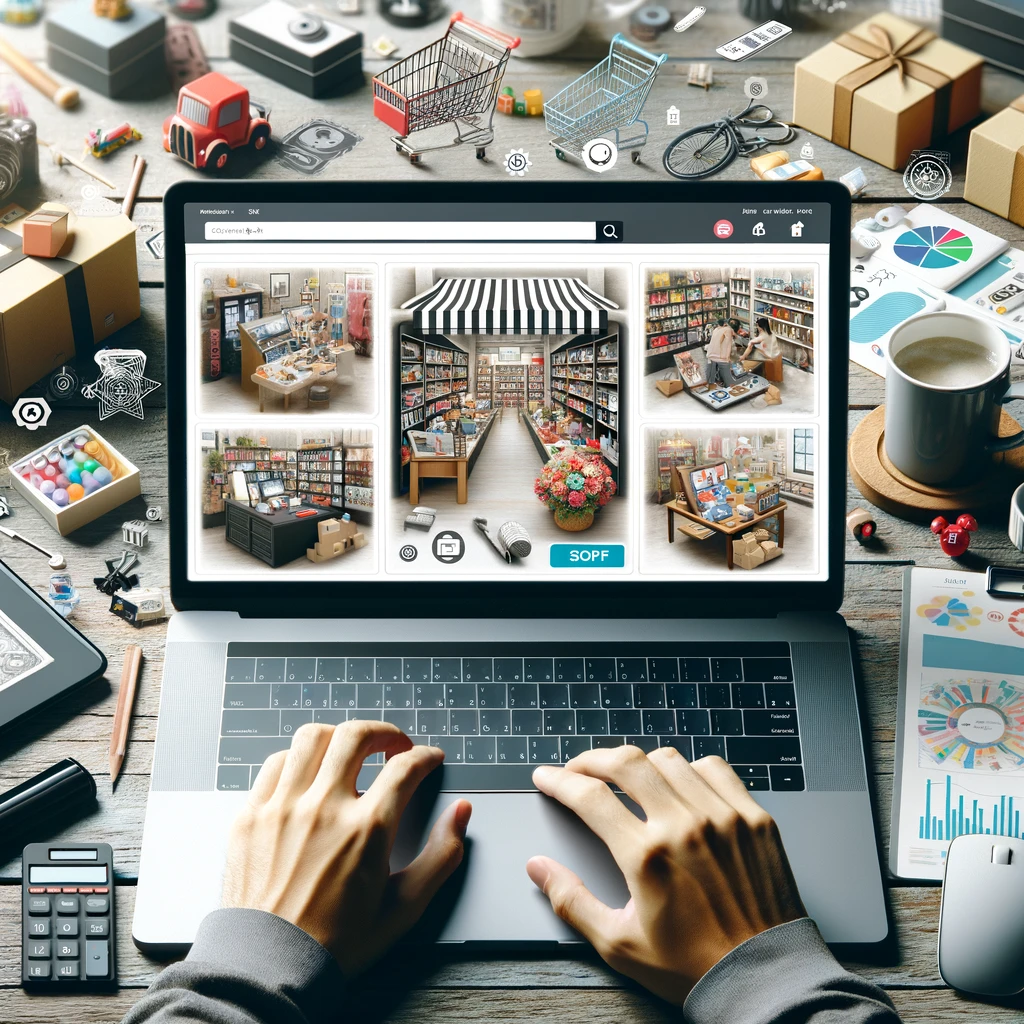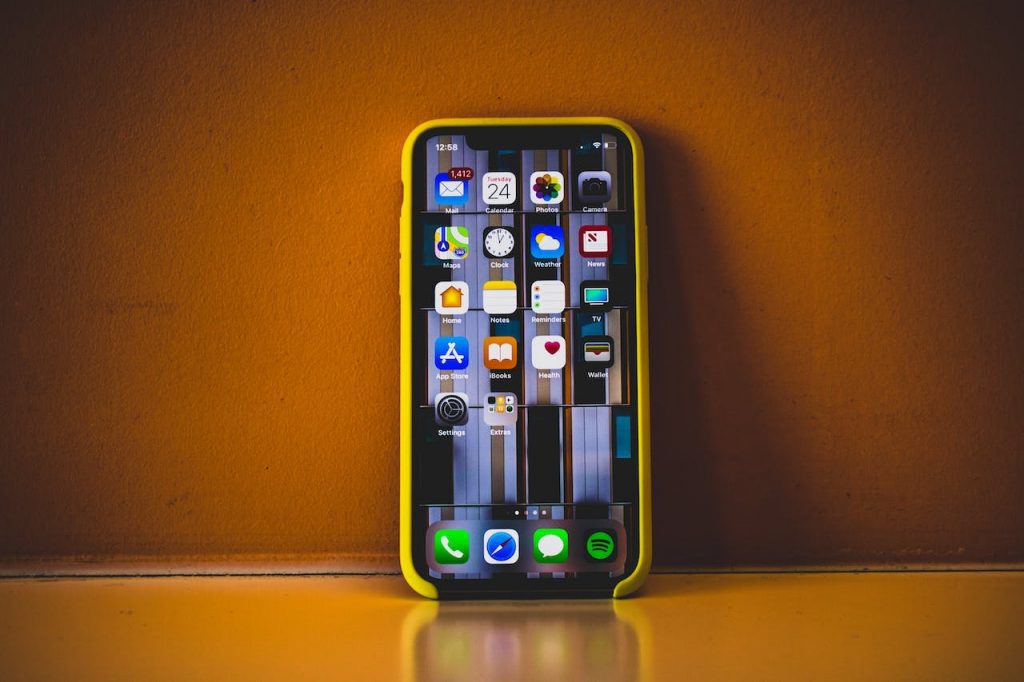Reading time: 14 minutes.
Introduction
In our increasingly digital world, the role of technology in enhancing lives cannot be overstated. This is particularly true when it comes to app development, which has the potential to significantly improve the daily experiences of people from all walks of life. Among the diverse user base, individuals with neurodiverse conditions represent a significant and often underrepresented group. Neurodiversity encompasses a range of neurological differences that are just as natural and essential as any other human variation. With the growing awareness of neurodiversity, there’s an emerging need to develop apps that are not only inclusive but also specifically cater to the unique needs of neurodiverse individuals.
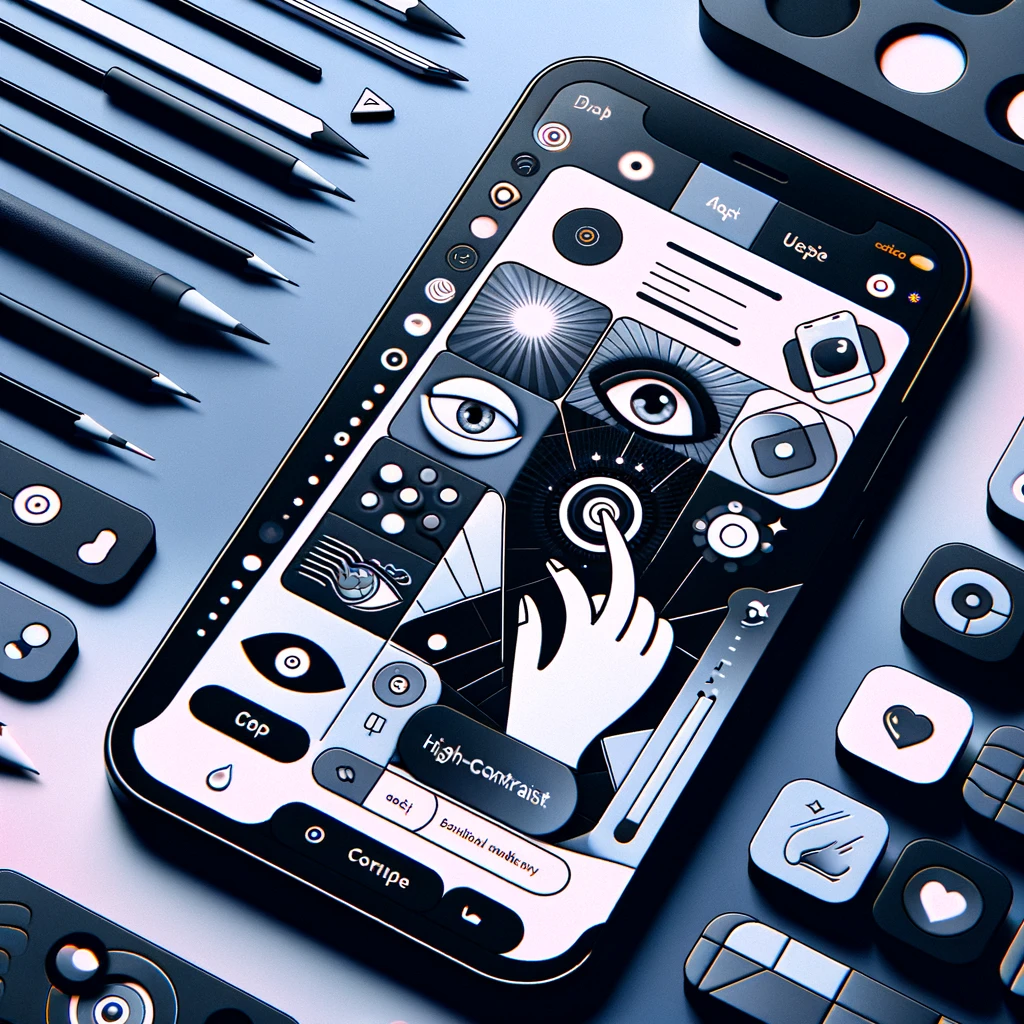
This guide delves into the intricacies of building apps tailored for neurodiversity. It’s designed to offer insights, strategies, and principles that can help developers create applications that are accessible, user-friendly, and empowering for those who might experience the digital world differently. The guide covers various aspects, from understanding neurodiversity and its challenges to implementing practical design solutions and engaging with the neurodiverse community.
In today’s tech-driven environment, the importance of inclusivity in app development cannot be overstated. Apps that are mindful of neurodiverse users not only broaden their reach but also contribute to a more inclusive society. By acknowledging and addressing the diverse needs of all users, developers can create digital experiences that are truly enriching and beneficial for everyone.
Defining ‘Neurodiversity’
Neurodiversity is a concept that recognizes and values the diverse range of human brains and neurocognitive functioning. It suggests that neurological differences like autism, ADHD, dyslexia, and other neurological or developmental conditions are simply variations of the human brain, rather than deficits. The term was coined in the late 1990s by sociologist Judy Singer, who herself is on the autism spectrum. The neurodiversity paradigm shifts the focus from viewing these conditions as disabilities or disorders, to understanding them as part of the normal variation in the human genome.
The concept of neurodiversity has been instrumental in fostering acceptance and understanding of people with neurological differences. It encourages the idea that different neurological conditions bring unique strengths and perspectives, which can be beneficial in various aspects of society, including technology and innovation.
Defining ‘Neurotypical’
In contrast to neurodiversity, the term “neurotypical” is used to describe individuals whose neurological development and functioning are consistent with what society considers standard or typical. It is often used as a reference point in discussions about neurodiversity to differentiate between those who have neurological conditions and those who do not.
Neurotypical individuals typically do not experience the challenges associated with conditions like autism, ADHD, or dyslexia in their daily lives. However, it’s important to note that being neurotypical does not imply superiority or normality in a general sense. Rather, it’s simply a descriptor for a different set of neurological characteristics.
Understanding the distinction between neurodiverse and neurotypical is essential in the context of app development. It allows developers to appreciate the varied ways in which people process information and interact with their environment, leading to the creation of more inclusive and accessible technology solutions.
Design Principles
User-Centric Design
User-centric design is fundamental in creating apps for neurodiverse individuals. It involves placing the user at the heart of the development process, ensuring that their needs, preferences, and challenges are the primary focus. This approach requires thorough research and engagement with neurodiverse individuals, which can be achieved through empathy interviews, surveys, and participatory design sessions. These interactions provide invaluable insights into the unique ways neurodiverse users interact with technology, allowing for a deeper understanding of their experiences.
The design should strive for simplicity and clarity. This means using straightforward language, intuitive navigation, and clear visual cues. For neurodiverse users, particularly those with conditions like autism or ADHD, complex layouts or ambiguous instructions can be overwhelming and hinder their ability to use the app effectively. Hence, a minimalistic approach that prioritizes ease of use is often most effective.
Customization is another crucial aspect of user-centric design. Neurodiverse users have diverse needs and preferences, and allowing them to tailor the app to their specific requirements can significantly enhance usability. This could include options to change text sizes, alter color schemes, or modify the interface layout. Such flexibility not only accommodates a wide range of sensory and cognitive needs but also empowers users by giving them control over their app experience.
In summary, a user-centric design approach in app development for neurodiversity involves deep user engagement, simplicity in design, and customization options. By adhering to these principles, developers can create apps that are not only accessible but also resonate with the diverse experiences of neurodiverse users.
- Research and Empathy: Engage with neurodiverse individuals to understand their needs and challenges. Empathy interviews and user testing can provide invaluable insights.
- Simplicity and Clarity: Use clear and simple language and visuals. Avoid overwhelming users with too much information or complex navigation.
- Customization: Allow users to personalize their app experience. This could include adjustable text sizes, color schemes, and controls.
Accessibility Features
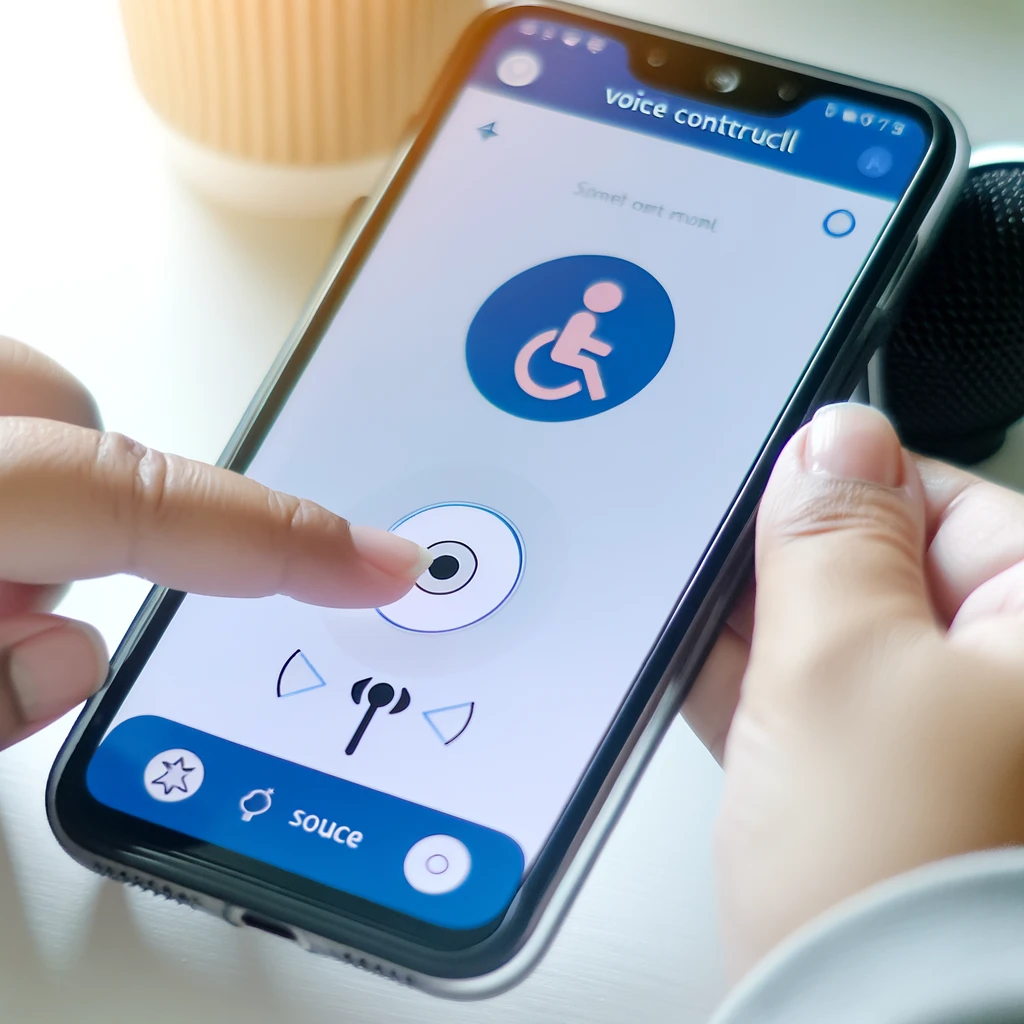

When designing apps for neurodiversity, integrating accessibility features is crucial. These features ensure that the app can be used comfortably and effectively by individuals with various neurological differences. Key aspects include:
- Voice Controls and Dictation: For users who find manual interaction challenging, such as those with dyspraxia or motor skill difficulties, voice controls and dictation features can be invaluable. Integrating advanced voice recognition technology enables users to navigate the app, input data, and execute commands using their voice, thereby enhancing usability and independence.
- Visual Aids: Visual supports play a significant role in enhancing comprehension and navigation for users with learning disabilities, such as dyslexia, or those on the autism spectrum. Including clear icons, simple graphics, and high-contrast color schemes can aid in understanding and reduce cognitive load. For instance, using distinct colors to differentiate interactive elements from informational content can help users identify actionable items more easily.
- Subtitles and Transcriptions: For individuals with auditory processing disorders or hearing impairments, providing subtitles for audio content and transcriptions for video materials is essential. This feature ensures that all users have access to the information conveyed in multimedia formats. It’s important that these subtitles and transcriptions are clear, well-timed, and accurately reflect the spoken content.
- Adjustable Settings: Offering adjustable settings for sound, brightness, and text size caters to a wide range of sensory sensitivities and preferences. For instance, users with ADHD may find overly stimulating sounds and visuals distracting, while those with visual impairments may benefit from larger text and higher contrast settings.
- Simplified and Structured Layouts: Creating interfaces with simplified, structured layouts can significantly benefit users with cognitive challenges. A well-organized app with a consistent layout reduces the cognitive effort required to navigate and understand the content, making the app more accessible to users with cognitive disabilities like autism or dyslexia.
By incorporating these accessibility features, app developers can ensure that their products are not only usable but also enjoyable for neurodiverse individuals. This inclusive approach is key to creating digital products that respect and cater to the wide spectrum of human neurodiversity.
Consistency and Predictability
Consistency and predictability are vital principles in designing apps for neurodiverse users. A consistent interface helps in creating a safe and predictable environment for users, particularly those with neurological conditions like Autism Spectrum Disorder (ASD), where a predictable structure can be comforting and reduce anxiety.
- Predictable Navigation: The navigation structure of the app should be intuitive and remain consistent throughout. Any changes in the layout or functionality can be disorienting for neurodiverse users. To achieve this, use familiar icons and maintain consistent placement for navigation elements. Tooltips and descriptive labels can also aid in making navigation more predictable.
- Routine and Structure: Incorporating elements that support the establishment of routines can be especially beneficial. Features like customizable reminders, structured schedules, or step-by-step guides can provide a sense of stability and security. For many neurodiverse individuals, especially those on the autism spectrum, routines are not just a preference but a necessity for managing daily life.
- Feedback and Confirmation: Providing clear feedback for actions taken within the app is crucial. For instance, if a user completes a task or changes a setting, immediate and clear confirmation helps in understanding the action’s result. This reduces confusion and builds confidence in using the app.
- Error Tolerance and Recovery: Design the app to be forgiving of mistakes. Features like easy-to-undo actions or simple correction methods can make the app more user-friendly. For neurodiverse users who might struggle with fine motor skills or face challenges in understanding complex instructions, being able to easily rectify mistakes is essential.
- Gradual Change Management: If updates or changes are necessary, introduce them gradually. Provide clear information and support to help users adapt to these changes. This could include tutorial videos, step-by-step guides, or a transition period where both the old and new versions are accessible.
By focusing on consistency and predictability, app developers can create a more accessible and comfortable user experience for neurodiverse individuals. This approach not only helps in navigating the app but also in reducing anxiety and frustration, making technology more approachable and useful for everyone.
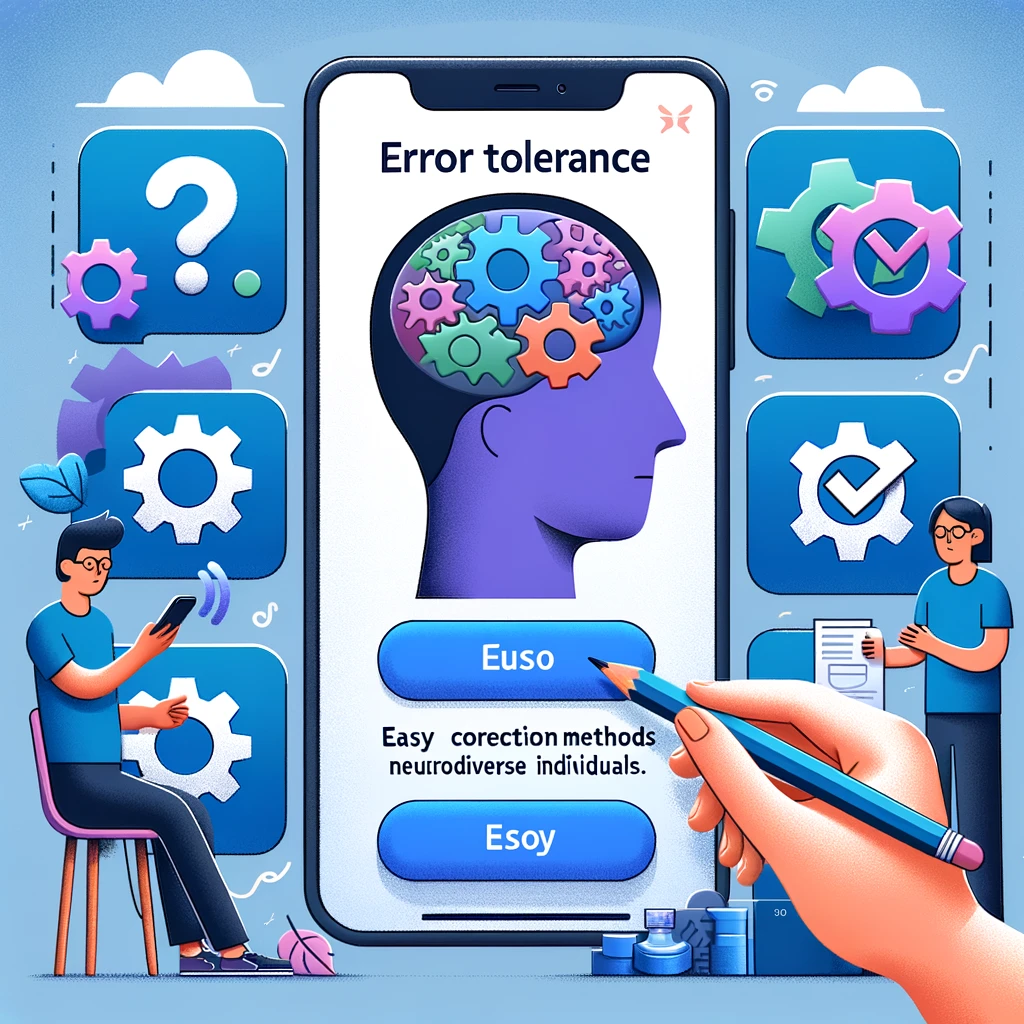

Technical Considerations
When developing apps for neurodiversity, several technical considerations are crucial to ensure that the final product is accessible, efficient, and secure. These considerations are fundamental to creating an app that is not only functional but also genuinely inclusive for neurodiverse users.
- Platform Compatibility: It’s important to ensure that the app is compatible across various devices and operating systems, including smartphones, tablets, and desktop computers. This broad compatibility ensures that the app is accessible to a wide range of users, regardless of their preferred technology. Responsive design techniques can be employed to guarantee that the app functions well on different screen sizes and resolutions.
- Performance and Speed: Neurodiverse users, especially those with attention-related challenges like ADHD, can be particularly sensitive to delays and lags in app performance. Therefore, optimizing the app for fast loading times and smooth performance is essential. This can be achieved through efficient coding practices, optimizing images and multimedia content, and minimizing the use of heavy frameworks that can slow down the app.
- Security and Privacy: Maintaining high standards of data security and privacy is critical, especially as neurodiverse users may be more vulnerable to online risks. The app should adhere to best practices in data encryption, secure user authentication, and regular security updates. Moreover, clear privacy policies should be in place, informing users about how their data is used and protected.
- Accessibility Testing: Regular testing for accessibility is essential. This should include both automated testing tools and user testing sessions with neurodiverse individuals. Such testing ensures that the app remains accessible under various conditions and usage scenarios. It’s also important to stay updated with the latest accessibility guidelines and standards, such as the Web Content Accessibility Guidelines (WCAG).
- Multimedia Optimization: For users with sensory sensitivities, it’s important to optimize multimedia content. This includes providing options to control audio levels, avoiding overly stimulating visuals, and ensuring that any animations are smooth and not jarring.
Incorporating these technical considerations is a key step in creating apps that are not only functional and user-friendly for neurodiverse individuals but also robust, secure, and reliable for all users.
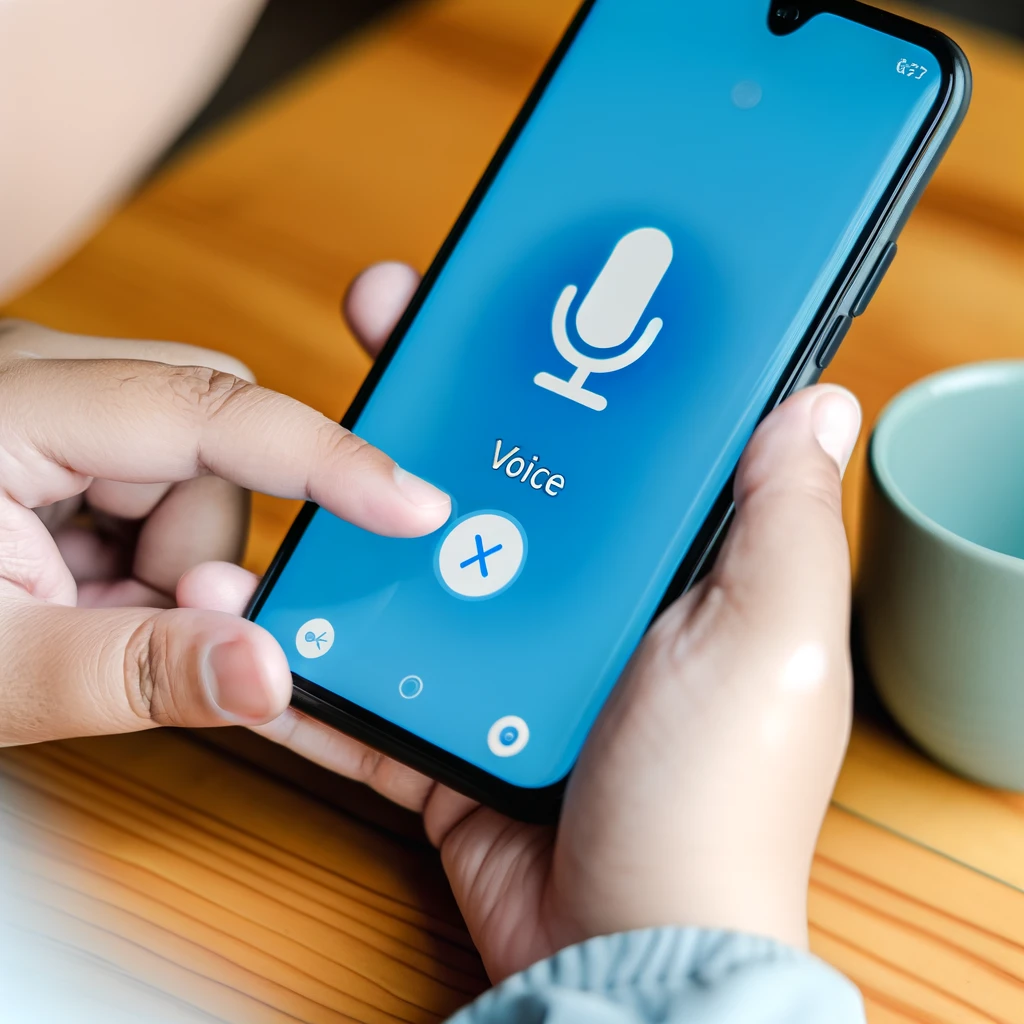

Engaging with the Neurodiverse Community
Engaging with the neurodiverse community is a critical aspect of developing apps that are truly inclusive and effective. This engagement should be continuous, respectful, and rooted in a genuine desire to understand and meet the unique needs of neurodiverse individuals.
- Feedback Loops: Establishing direct and ongoing channels for feedback is essential. This can be facilitated through user surveys, focus groups, and beta testing specifically involving neurodiverse individuals. Such feedback mechanisms not only provide insights into the usability of the app but also convey to users that their opinions and experiences are valued and taken seriously.
- Community Involvement: Actively involve the neurodiverse community in the development process. This can include co-design sessions, where neurodiverse users are invited to participate in the creation and refinement of the app. By involving users from the beginning, developers can ensure that the app addresses real needs and preferences.
- Collaboration with Experts: Collaborate with educators, therapists, and other professionals who specialize in working with neurodiverse individuals. These experts can offer valuable insights into the cognitive and sensory challenges faced by neurodiverse users and suggest practical solutions to address these challenges in the app design.
- Inclusive Marketing: When marketing the app, it’s important to ensure that the promotional materials are inclusive and accurately represent the neurodiverse community. Avoid stereotypes and tokenism; instead, focus on the app’s benefits, usability, and features that make it suitable for a neurodiverse audience. This not only helps in reaching the target audience but also raises awareness about neurodiversity in the broader community.
- Education and Awareness: Part of engaging with the neurodiverse community involves educating the team and stakeholders about neurodiversity. Workshops, seminars, and training sessions can help in building an understanding and appreciation of neurodiversity, leading to more empathetic and informed approaches in app development.
By actively engaging with the neurodiverse community, app developers can create products that are not only technically sound but also deeply resonant and useful to neurodiverse individuals. This engagement fosters a sense of community and ensures that the apps created are truly reflective of the diverse needs and experiences of their users.
Legal and Ethical Considerations
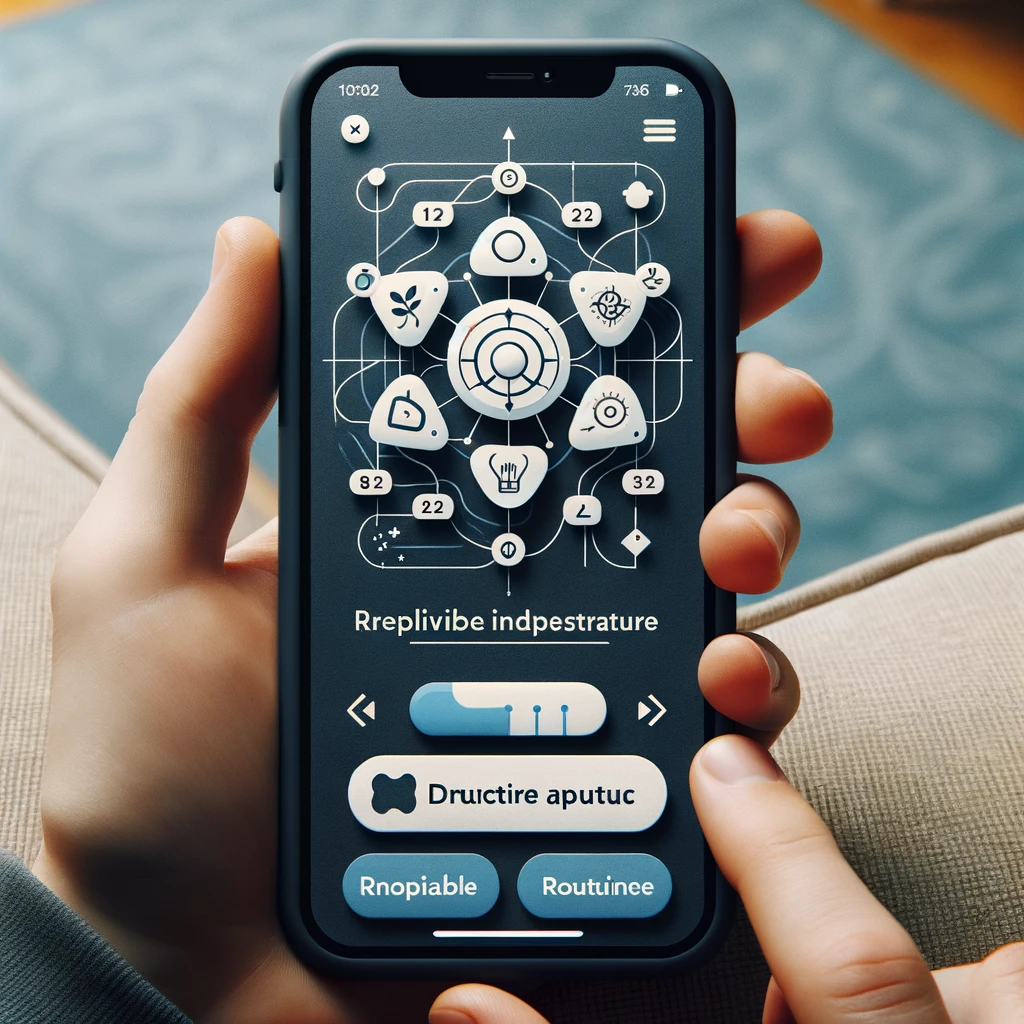

In the development of apps catering to neurodiverse users, legal and ethical considerations play a pivotal role. These considerations are not just about compliance with laws but also about upholding the dignity, rights, and well-being of neurodiverse individuals.
- Compliance with Accessibility Laws: Developers must be aware of and comply with laws and regulations related to digital accessibility. This includes legislations like the Americans with Disabilities Act (ADA) in the United States, the Accessibility for Ontarians with Disabilities Act (AODA) in Canada, and the Equality Act in the UK. These laws ensure that digital products are accessible to all users, including those with disabilities.
- Data Protection and Privacy: Adherence to data protection laws such as the General Data Protection Regulation (GDPR) in Europe is essential. Neurodiverse users might be more vulnerable to privacy breaches, so it’s crucial to implement robust data protection measures, ensure transparency in how user data is collected and used, and provide users with control over their personal information.
- Ethical Design and Inclusivity: Apps should be designed ethically, respecting the users’ autonomy and avoiding features that could be manipulative or exploitative. This includes considering the potential for over-reliance on the app and ensuring that the app promotes independence rather than dependency.
- Avoiding Stereotypes and Bias: It’s important to avoid stereotypes and biases in app design and content. This requires a nuanced understanding of neurodiversity and the avoidance of one-size-fits-all solutions. Design decisions should be informed by a diverse range of voices and experiences within the neurodiverse community.
- User Dignity and Empowerment: The app should be designed in a way that respects the dignity of neurodiverse individuals. This means avoiding paternalistic or infantilizing content and instead focusing on empowering users with tools and features that support their independence and self-determination.
By paying careful attention to these legal and ethical considerations, developers can ensure that their apps not only meet legal requirements but also align with ethical standards, thereby contributing to a more inclusive and respectful digital environment for neurodiverse individuals.
Challenges and Solutions
Developing apps for neurodiversity presents unique challenges, but with thoughtful approaches and solutions, these can be effectively addressed to create inclusive and accessible software.
- Addressing Diverse Needs: The spectrum of neurodiversity is broad, encompassing conditions like ASD, ADHD, dyslexia, and more, each with its own set of needs. A one-size-fits-all approach is impractical. The solution lies in flexible design and customization options, allowing users to tailor the app to their specific preferences and requirements. Regular feedback from a diverse group of neurodiverse users can also guide iterative improvements.
- Balancing Simplicity and Functionality: Striking the right balance between a simple, user-friendly interface and maintaining necessary functionalities is challenging. Over-simplification might limit the app’s usefulness, while complexity can make it inaccessible. The key is in modular design, where core functionalities are simple and intuitive, but additional features can be accessed as needed. User testing with neurodiverse individuals is crucial to refine this balance.
- Educating Developers and Designers: Often, developers and designers may lack awareness or understanding of neurodiversity. Providing education and training about neurodiverse needs and inclusive design practices is essential. Collaboration with experts in neurodiversity can also enhance the team’s understanding.
- Technological Limitations: Sometimes, the desired accessibility features may be challenging to implement due to technical constraints or platform limitations. In such cases, prioritizing key features based on user feedback and finding creative workarounds or alternative solutions is necessary.
- Cost and Resource Constraints: Developing highly customizable and accessible apps can be resource-intensive. To manage this, focus on the most impactful features identified through user research. Seeking partnerships or grants, especially from organizations advocating for neurodiversity, can also be a viable strategy.
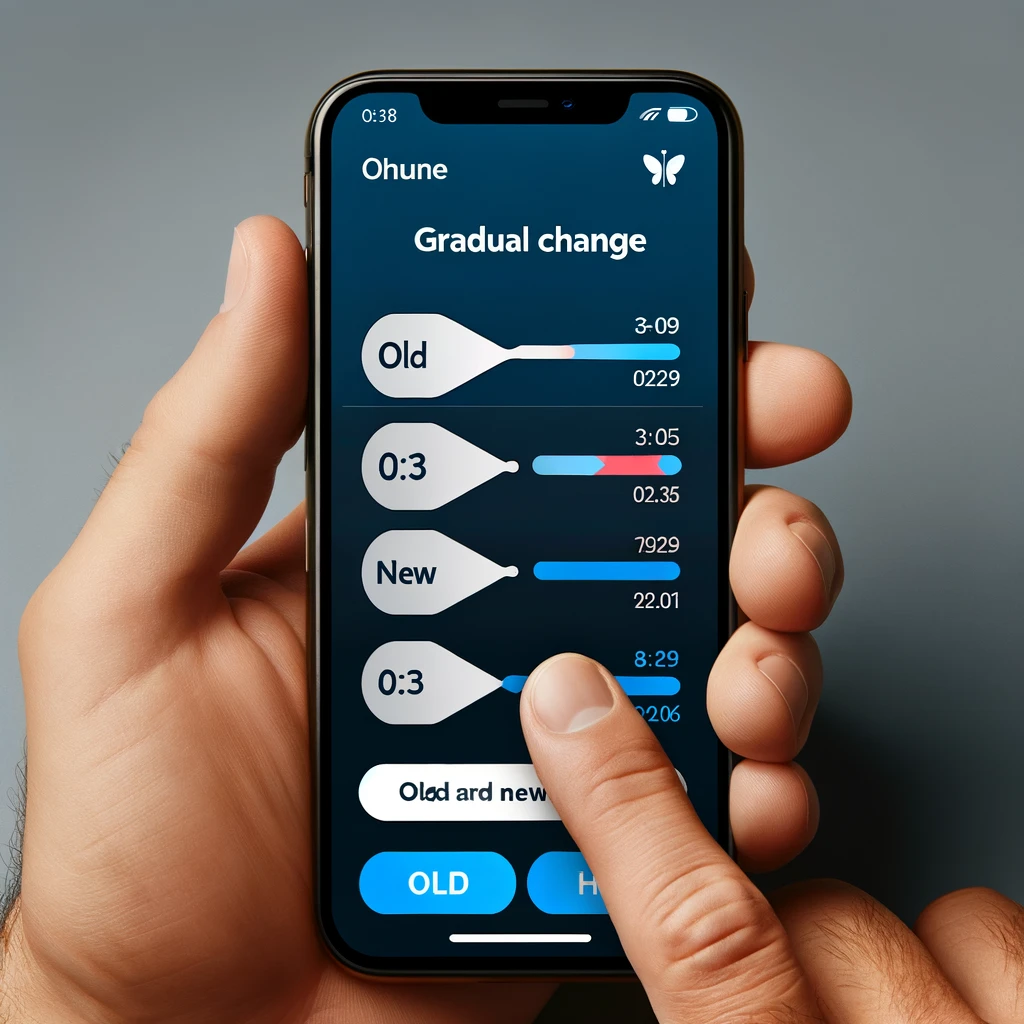

By acknowledging and creatively addressing these challenges, developers can create apps that are not only technologically advanced but also deeply inclusive, catering effectively to the varied needs of the neurodiverse community.
Conclusion
Building apps for neurodiverse individuals is not just about technical proficiency; it’s about empathy, understanding, and respect for diversity. By following these guidelines, developers can create apps that are not only accessible but also empowering for all users, regardless of their neurological makeup. Embracing neurodiversity in app development is not just a niche concern—it’s a step towards a more inclusive and understanding society.

